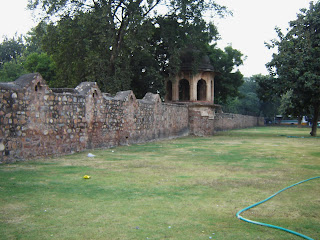


The Qutab Minar , a tower in Delhi, India, is at 72.5 meters the world's tallest brick minaret. It is situated in the Qutb complex, amidst the ruins of ancient Hindu temples which were destroyed and their stones used to build the Qutb complex and minar. Construction commenced in 1193 under the orders of India's first Muslim ruler Qutb-ud-din Aibak, and the topmost storey of the minaret was completed in 1386 by Firuz Shah Tughluq. The Qutb Minar is notable for being one of the earliest and most prominent examples of Indo-Islamic architecture.
It is surrounded by several other ancient and medieval structures and ruins, collectively known as Qutb complex. The complex is listed as a UNESCO World Heritage Site and is one of the most popular tourist destinations in Delhi, and was also India's most visited monument in 2006, as it attracted 38.95 lakh visitors, even more than the Taj Mahal, which drew about 25.4 lakh visitors.
The complex was added to by many subsequent rulers, including Firoz Shah Tughlaq and Ala ud din Khilji as well as the British.
In 2004, Seismic monitors were installed on the minar, which revealed in 2005 Delhi earthquake, no damage or substantial record of shakes. The reason for this has be cited as use on lime mortar and rubble masonry which absorbs the tremors, plus it is built on rocky soil, which further saves it during earthquakes.















































